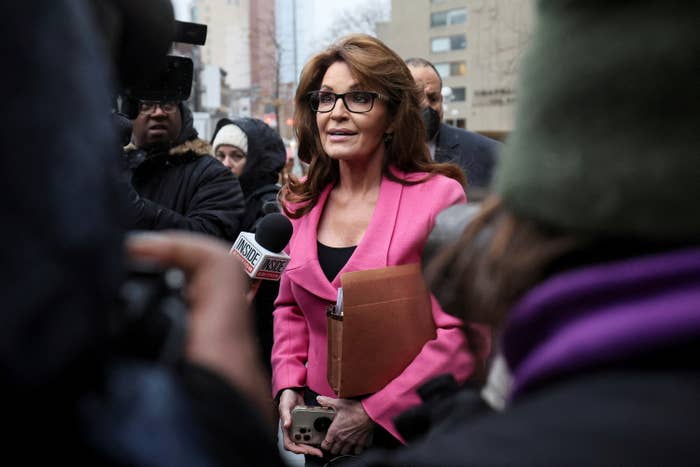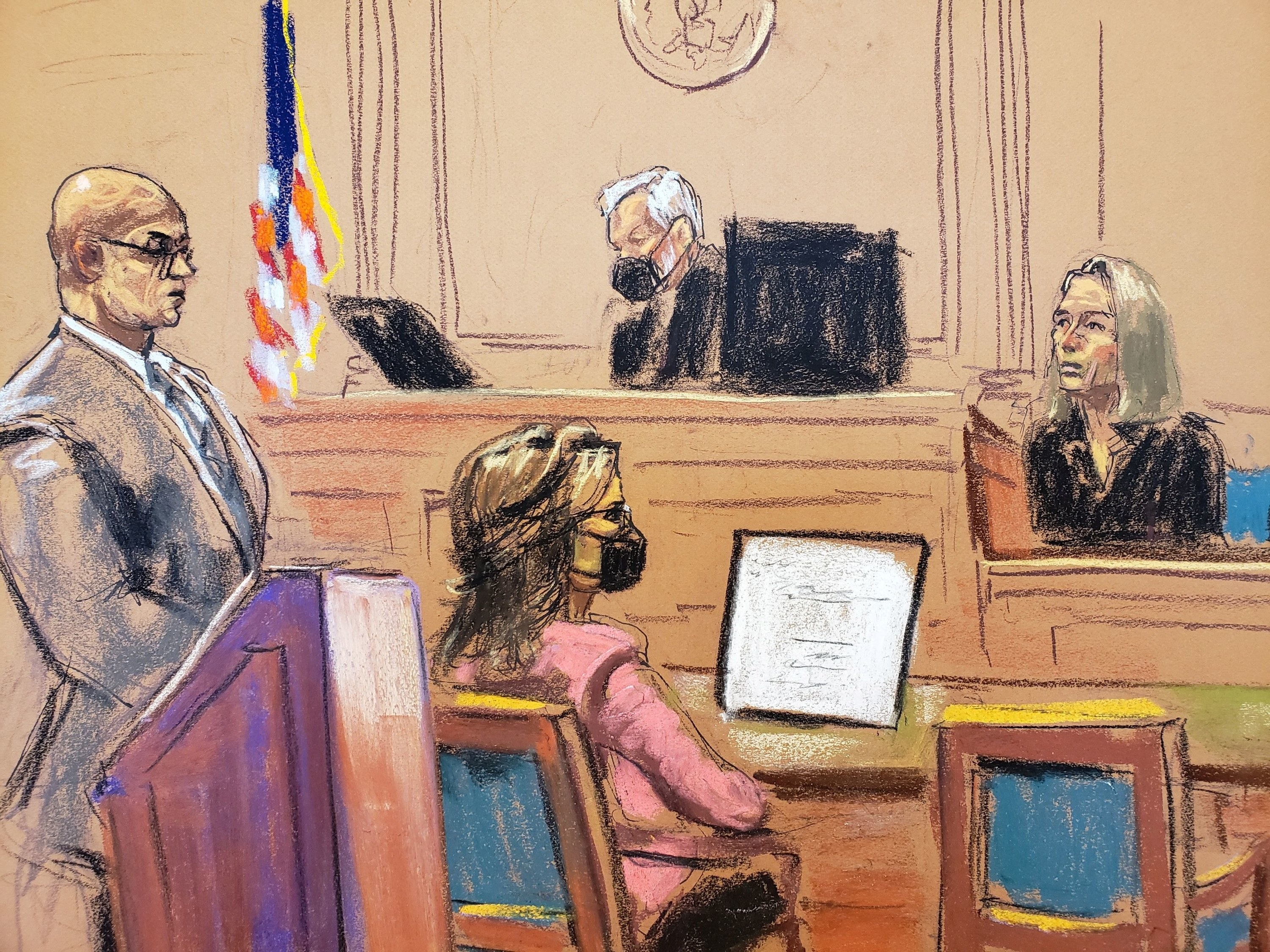
The nine jury members who will decide Sarah Palin’s defamation lawsuit against the New York Times were treated to a voyeuristic, behind-the-scenes look at the inner workings of the newspaper’s editorial department on Friday.
In a federal courtroom in downtown Manhattan, Times writer Elizabeth Williamson testified in exhaustive detail how she worked with multiple colleagues and editors over the course of June 14, 2017, as she wrote the first draft of an editorial in response to a mass shooting that targeted Republican members of Congress earlier that day at a Virginia baseball field.
One name that arose that jurors probably did not expect to hear: Kathy Griffin.
Palin attorney Shane Vogt had Williamson acknowledge that the editorial condemning overheated political rhetoric, “America’s Lethal Politics,” did not mention the comedian’s stunt photo featuring her holding a mock bloodied, severed head of former president Donald Trump.
That photo sparked widespread outrage when it was published on May 30, 2017 — about two weeks before the baseball shooting, which was carried out by a Bernie Sanders supporter.
Palin’s team has attempted to portray the newspaper staff as acting with an anti-Republican, anti-Palin bias when they published the editorial, which falsely referenced a “clear” link of “political incitement” between a Palin political action committee map and the 2011 shooting in Arizona that injured Gabby Giffords and killed six others. (No such link was ever found.)
But Times attorney David Axelrod (not to be confused with the former adviser to Barack Obama) then had Williamson acknowledge that Griffin is a comedian, not a politician.
“Did ‘America’s Lethal Politics’ address things that comedians were saying?” he asked.
“No,” Williamson replied. “It was addressing political rhetoric and two shootings of members of Congress.”
Reached for comment about her name being brought up at trial, Griffin told BuzzFeed News, “I am thrilled to have the distinguished honor of being one of the reasons that Sarah Palin will lose this case in federal court.”

Williamson testified all day on Friday, detailing over several hours how she was assigned the task of writing a piece in response to the Virginia shooting and how she went about doing so. Her goal for the editorial, she said, was to address the “twin themes” of easy access to guns and overheated political speech.
At several points, she sought to clarify that her research that day was focused on the political rhetoric in the leadup to the 2011 shooting and not the shooting itself. She said her boss, then–opinion editor James Bennet, did not ask her to research the Arizona gunman’s motives until the day after they published the editorial and became alerted to the factual inaccuracy Bennet had inserted into Williamson’s story while editing it.
The jury saw evidence of messages between Williamson and Bennet the morning after the editorial appeared online in which she said she “should have read those [paragraphs he had written] more closely and asked more questions.”
“No worries. I feel lousy about this one,” Bennet wrote. “I just moved too fast. I’m sorry.”
He asked Williamson and a colleague to research the 2011 shooting and correct the piece if necessary. “If there was no link we should say so,” he wrote.
“On it,” Williamson replied. “We’ll do the right thing.”

Williamson also described a phone call she had with Bennet in which she said “he was obviously pretty crestfallen” at the error. That evidence may go to Bennet’s state of mind at the time. For Palin to succeed in her case, she must prove Bennet acted with “actual malice,” meaning he acted either with knowledge of or reckless disregard for the statement’s falsity.
The morning after it appeared online, the Times then amended the editorial and added the following correction:
An editorial on Thursday about the shooting of Representative Steve Scalise incorrectly stated that a link existed between political rhetoric and the 2011 shooting of Representative Gabby Giffords. In fact, no such link was established. The editorial also incorrectly described a map distributed by a political action committee before that shooting. It depicted electoral districts, not individual Democratic lawmakers, beneath stylized cross hairs.
The newspaper also alerted readers on Twitter of its error.
Asked why she did not tag Palin on Twitter in the correction, Williamson replied: “One: this editorial was not about Sarah Palin. There was one sentence about Sarah Palin. The second and probably most important reason was this was going to our entire readership so this tweet and our apology was going to everyone, not just Sarah Palin.”
Earlier in her testimony, Williamson also made sure to clarify that she intentionally wrote the words “Sarah Palin political action committee” in her piece as she wanted to distinguish that legal entity from the governor. (Whether the potentially defamatory statement was about the PAC or Palin will be a legal issue that the jury must decide. Palin’s attorneys have argued the two are essentially one and the same.)
“I was writing about the map and not Sarah Palin. I was writing about her political action committee’s map,” Williamson said, describing it as “Exhibit A” of the violent rhetoric that preceded the 2011 shooting.
The trial resumes Monday, and Bennet is expected to testify early next week.
